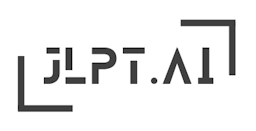

N3
音読み:shu
訓読み:toru
シュshu
と.るtoru
To take, to obtain
Imagine a person extending their hand to take something. The curved line represents the act of grabbing or obtaining, while the horizontal and vertical lines symbolize the hand reaching out and the item being taken.
The kanji '取' is a common character encountered in JLPT materials, particularly at the N3 level. Its meaning and readings are frequently assessed in both kanji and reading comprehension sections of the exam.
彼はお金を取ってくるように頼まれました。
He was asked to go and get the money.
かれはおかねをとってくるようにたのまれました。
kare wa okane o totte kuru you ni tanomaremashita.
この本を図書館で借りることができます。
You can borrow this book from the library.
このほんをとしょかんでかりることができます。
kono hon o toshokan de kariru koto ga dekimasu.
彼は大切な資料を取り戻した。
He retrieved the important documents.
かれはたいせつなしりょうをとりもどした。
kare wa taisetsu na shiryou o torimodoshita.